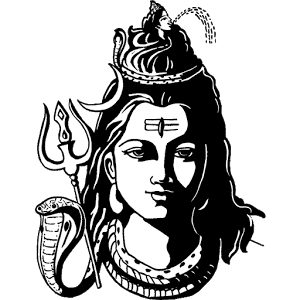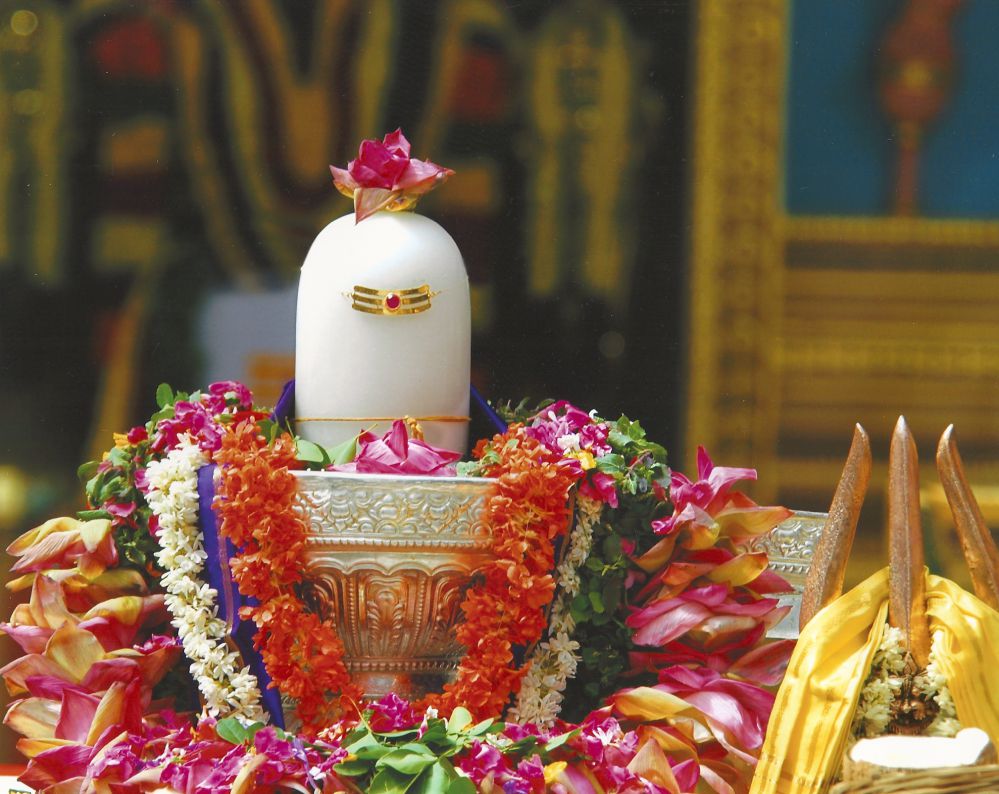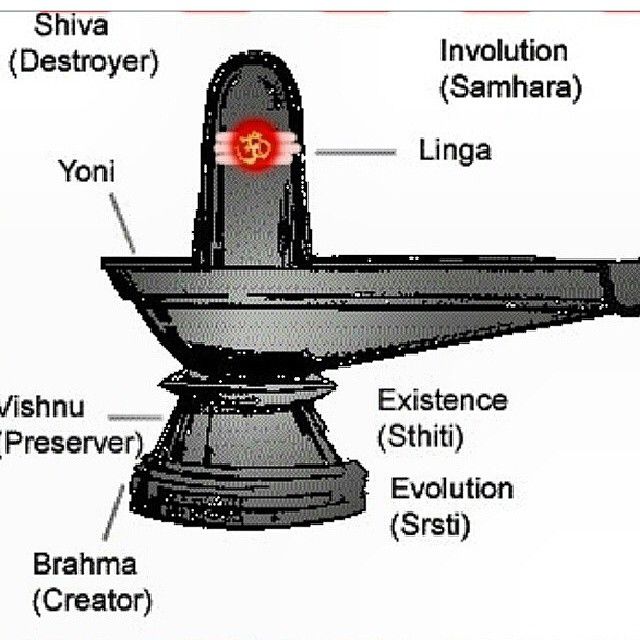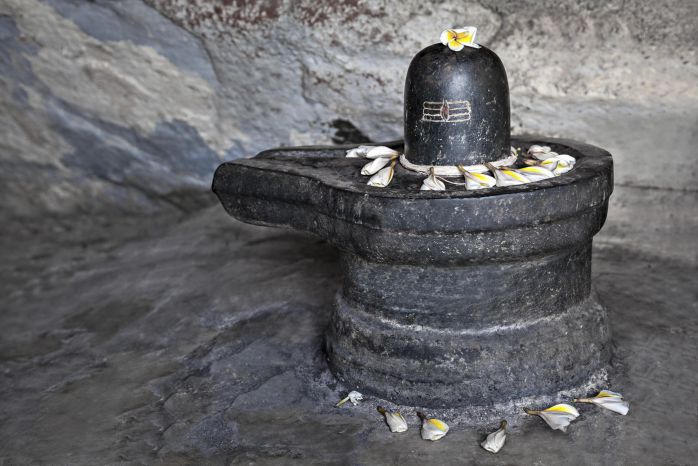No products in the cart.
Shiva meaning “The Auspicious One” is one of the three major deities of Hinduism. He is worshiped as the Supreme God within Shaivism, one of the three most influential denominations in contemporary Hinduism and is also called “the Transformer and the Destroyer”.
The most popular form of worshipping Lord Shiva in Hinduism is in the Linga form. It is known as Shivling or Shivalinga. The Linga symbol is an attempt to give form to the formless, referred as Supreme Being or Brahman in Hindu religion. When a Linga is installed on a Yoni, it represents the union of Shiva and Shakti – the beginning of creation. It is found at the centre of the temple, often resting in the middle of a rimmed, disc-shaped yoni.
Linga in Sanskrit means symbol or sign. One of the first uses of the term ‘linga’ in association with Shiva is found in the Shvetasvatara Upanishad – it says that Lord Shiva, the Supreme Being, has no linga (sign or symbol). In simple terms, it is impossible to define Brahman or that is alinga.
Since it is not possible for a common man to pray to Brahman which is beyond any characteristic and, hence, human beings need a form to worship, therefore, in Sanatana Dharma it is stated that each individual has the freedom to define the Supreme Being or Brahman in the most convenient way he/she is comfortable. One of the best representations for the Supreme was to be the Linga in its form which represents the infinite.
The Mahabharata says ‘Know everything, which is male, to be Ishana, and all that is female to be Uma; for this whole world, animate and inanimate, is pervaded by these two bodies. Shiva’s divine Linga is worshipped by the Gods, seers, Gandharvas and Apsaras.’ (Chapter 7, section 20, verses 22)
The greatness of this form of Shiva is based on the fact that the children bear neither the lotus symbol of Brahma nor of Vishnu’s discuss…but one marked with the male and female organs, the linga and yoni, originated from Mahadeva and Devi (Chapter 13, section 19, verses 78)
Puranas and Epics in Hinduism narrate in detail why Shiva is worshipped in the form of linga.
Why is Shiva Worshipped in the form of Linga?
Linga as the Representation of the Infinite
It is said that the Supreme Being appeared before Lord Brahma and Vishnu in the form of a ‘pillar of fire’, which had no end and beginning. This mention can be found in Puranas like Brahmanda purana, Linga Purana. It is one among the many symbols of the Brahman, the Supreme. So the linga form of Shiva also signifies the column of bright light. This account was narrated by the sage Sūta when other sages asked him about the origin of the linga:
kathaṃ liṃgamabhūlliṃge samabhyarcyaḥ sa śaṃkaraḥ
kiṃ liṃgaṃ kastathā liṃgī sūta vaktumihārhasi [LP – 17.2]
Meaning
How can there be linga of God who is alingi (without linga). How the linga of Shankara is worshipped? What is linga and what is lingi? O Suta, please tell us these.
Then Sūta goes on to narrate how Brhama had earlier given answers to the same questions to the gods. The linga form of Siva had appeared before the beginning of creation at the time when Vishnu and Brahma were engaged in arguments:
etasminnantare liṃgamabhavaccāvayoḥ puraḥ
vivādaśamanārthaṃ hi prabodhārthaṃ ca bhāsvaram
jvālāmālāsahasrāḍhyaṃ kālānalaśatopamam
kṣayavṛddhivinirmuktamādimadhyāṃtavarjitam [LP – 17.33,34]
Meaning
Then after that a bright linga appeared between both of us to counsel our arguments. That linga was surrounded by thousands of flames and hot like fire of death. Without any beginning and end, that was free from decay and growth.
Also known as Lingodbhava, the Linga Purana also supports this interpretation of lingam as a cosmic pillar, symbolizing the infinite nature of Shiva.
According to Linga Purana, the lingam is a complete symbolic representation of the formless Universe Bearer – the oval shaped stone is resembling mark of the Universe and bottom base as the Supreme Power holding the entire Universe in it.
Linga is worshipped because Linga contains everything of this world. In the Linga Purana [part 2 chapter 46], once sages have debate regarding why Linga form is worshipped. Goddess Saraswati vist the sages and states
अथांतरिक्षे विपुला साक्षाद्देवी सरस्वती ।
अलं मुनीनां प्रश्नोऽयमिति वाचा बभूव ह ।।
सर्वं लिंगमयं लोकं सर्वं लिंगे प्रतिष्ठितम् ।
तस्मात्सर्वं परित्यज्य स्थापयेत्पूजयेच्च तत् ।।
May the questions of the sages stop. The whole world is identical with the Linga. Everything is founded on the Linga. Hence, one shall eschew everything, install the Linga and worship it.
Godesses Saraswati also states that all Gods are present in the Linga form. She states:
ब्रह्मा हरश्च भगवान्विष्णुर्देवी रमा धरा ।।
लक्ष्मीर्धृति: स्मृति: प्रज्ञा धरा दुर्गा शची तथा ।
रुद्राश्च वसव: स्कन्दो विशाख: शाख यव च ।।
नैगमेशश्च भगवाँल्लोकपाला ग्रहास्तथा ।
सर्वे नंदिपुरोगाश्च गणा गणपति: प्रभु: ।।
पितरो मुनय: सर्वे कुबेराद्याश्च सुप्रभा: ।
आदित्या वसव: सांख्या अश्चिनौ च भिषग्वरौ ।।
विश्वेदेवाश्व साध्याश्च पशव: पक्षिणों मृगा:।
ब्रह्मादिस्थावरांतं च सर्वं लिंगे प्रतिष्ठितम् ।।
तस्मात्सर्वं परित्यज्य स्थापयेल्लिंगमव्ययम् ।
यत्नेन स्थापितं सर्वं पूजितं पूजयेद्यदि ।।
Meaning
Brahma, Hara, Vishnu, Rama, Dhari, Lakshmi, Dhriti, Smrti, Prajni, Dhara, Durga, Sachi, Rudras, Vasus, Skanda, Visakha, Sakha, Naigamesa, guardians of the quarters, planets, the Ganas, Nandin, Ganapati, Pitras, sages, those lustrous ones beginning with Kubera, Adityas, Vasus, Samkhyaa, the excellent physicians Asvins, Visvedevas, Sadhyas, Pasus, birds: and animals— everything beginning with Brahma and ending with an immobile thing is founded on the Linga. Hence, one shall eschew everything and install the unchanging Linga. If one worships it, it is as good as worshipping everything installed assiduously.
Thus as every God is present in the Linga, it is highly auspicious to worship Linga. Trinities are situated in Linga and it is also stated in the next chapter ie. [Part 2 chapter 47] of Linga Purana:
मूले ब्रह्मा वसति भगवान्मध्यभागे च विष्णु: ।
सर्वेशानः पशुपतिरजो रुद्रमूर्तिर्वरेण्यः ।।
Lord Brahma resides at the root, Lord Vishnu in the middle. The lord of all unborn Pasupati in the form of Rudra resides at the top.
Similar interpretation is also found in the Skanda Purana: “The endless sky (that great void which contains the entire universe) is the Linga, the Earth is its base. At the end of time the entire universe and all the Gods finally merge in the Linga itself.” In yogic lore, the linga is considered the first form to arise when creation occurs, and also the last form before the dissolution of creation. It is therefore seen as an access to Shiva or that which lies beyond physical creation.
Linga as a Representation of Shiva and Shakti
It is related with the inseparable relation of Shiva and Shakti and linga form represents it. The relationship of Uma and Maheswara is like that of word and meaning. It is illustrated in Vayaviya samhita Shiva Purana, Shiva-Shakti Vibhuti chapter:
शब्दजालमशेषं तु धत्ते सर्वस्य वल्लभा ।
अर्थस्वरुपमखिलं धत्ते मुग्धेन्दुशेखरः ।।
The beloved of Shiva (Uma) is in the form of words. The moon crested Lord (Maheswara) is in the form of meaning of those words.
So, just as meaning is formless and it gets manifested through words. In the similar way formless Shiva gets manifested through Shakti. The same chapter also states:
एवं परस्परापेक्षा शक्तिशक्तिमतोः स्थिता ।
न शिवेन विना शक्तिर्न शक्त्या च विना शिवः ।।
There is mutual dependence between Shakti and Shaktiman. There is no Shakti without Shiva and no Shiva without Shakti.
The inseparable relationship of Shiva and Shakti is also shown by image or idol form of ArdhaNarishwara. However Linga form is the only form which establishes the word-meaning relationship. It is because formless Shiva gets manifested in Linga form through the base of Shakti. It is shown in Linga Purana [part 2 chapter 47]:
विशोध्य स्थापत्येद्भक्त्या सवेदिकमनुत्तमम् ।
लिंगवेदी उमा देवी लिंगं साक्षान् महेश्वर ।।
The Devotee shall clean Linga along with the pedestal and then devoutly install it. The pedestal of the Linga is Godess Uma and the Linga is Maheswara himself.
Thus as pedestal of Linga is Uma/ Shakti herself, thus it establishes inseparable Shiva-Shakti relationship. It shows that Nirguna Shiva gets manifested as the base of Shakti. So as it represents the Nirguna aspect, Shiva Purana [Videysavara samhita chapter 5] states:
रुपित्वात्सकलस्तद्वत्तस्मात्सकलनिष्कल ।
निष्कलत्त्वान्निराकारं लिंगं तस्य समागतम् ।।
He is also Sakala as he has an embodied form. He is both Sakala and Niskala (formless/ Nirguna).It is in his Niskala aspect that the Linga is appropriate as it represents formless aspect.
And it also denotes the infiniteness of Linga as stated by Vyasa in Drona Parva [Chapter 202] of Mahabharata:
दहत्यूर्ध्वं स्थितो यच्म प्राणेत्पतिस्थितश्चयत् ।
स्थितलिङ्गस्य पन्नित्यं तस्मात्स्थाणुरिति स्मृतः ।।
Since he is great and ancient and is the source of the life and it’s continuence and since his Linga form is everlasting, he is for that reason called Sthanu.
So, Lord Shiva is primarily worshipped in Linga form because it is the only form which establishes the inseparable relationship of Shiva-Shakti, it represents the manifestation of Nirguna in Saguna form and Linga is identical with the Universe itself and it represents infinity too. Thus it is best to worship Lord Shiva in Linga form.
Many of the incarnations of Lord Vishnu is known to have worshipped the Shivlinga including Lord Ram, Parashuram and Krishna. Eg: Padma Purana [Patala Khanda chapter 104] and Lord Rama himself states it as:
विभिषणः कथमसौबद्धः श्रृंखलयानृभि: ।
मत्स्थापितंशिवलिङ्गंदृष्ट्वारामेश्वरंत्वहो ।।
Oh, how is it that Vibhisana seeing the Linga of Shiva, (called) Ramesvara and installed by me,is bound with chains.
Lord Krishna in Anushasana Parva Dana Dharma section and Vyasa in Drona Parva[chapter 202] also make reference to the Shiva Linga:
ऋषयश्चैव देवाश्च गन्धर्वात्सरसस्तथा ।
लिङ्गमस्यार्चयन्ति स्म तच्मात्यूर्ध्वं समास्थितम् ।।
The Rishis, the Gods, the Gandharvas and Apsaras, always worship the Linga form which is supposed to stand upright.
When the mind is clear and is without prejudices, we will realize that the Linga form of Shiva is the most innocent form of Brahman that our ancestors had realized. It is pure and they got it from pure nature.
Lord Krishna in Anushashana Parva Dana Dharma section and Vyasa in Drona Parva [Chapter 202] states;
पूजयेद्विग्रहं यस्तु लिङ्ग वापि समर्चयेत् ।
लिङ्ग पूजयिता नित्यं महतीं श्रियमश्रुत ।।
He who adoreth Linga form of that high souled God, always obtained prosperity by that act.

Other Lord Shiva Articles You May Like









Linga represents the first knowledge that man as an evolved being understood.
Linga represents the formless Mahakaal who existed when there was nothing (shunya) and who will exist when there will be everything (infinity) the Yoni which acts as a base for the linga represents Maha Shakti (the Energy that creates and destroys). Shiva and Shakti exists together and without Shakti there is no Shiva. It’s like a body with no life. Shiva is the body and Shakti, the life.
The message being Time and Energy are Eternal manifestations of the supreme omniscient consciousness and together they represent the creation and eventual destruction of universe.